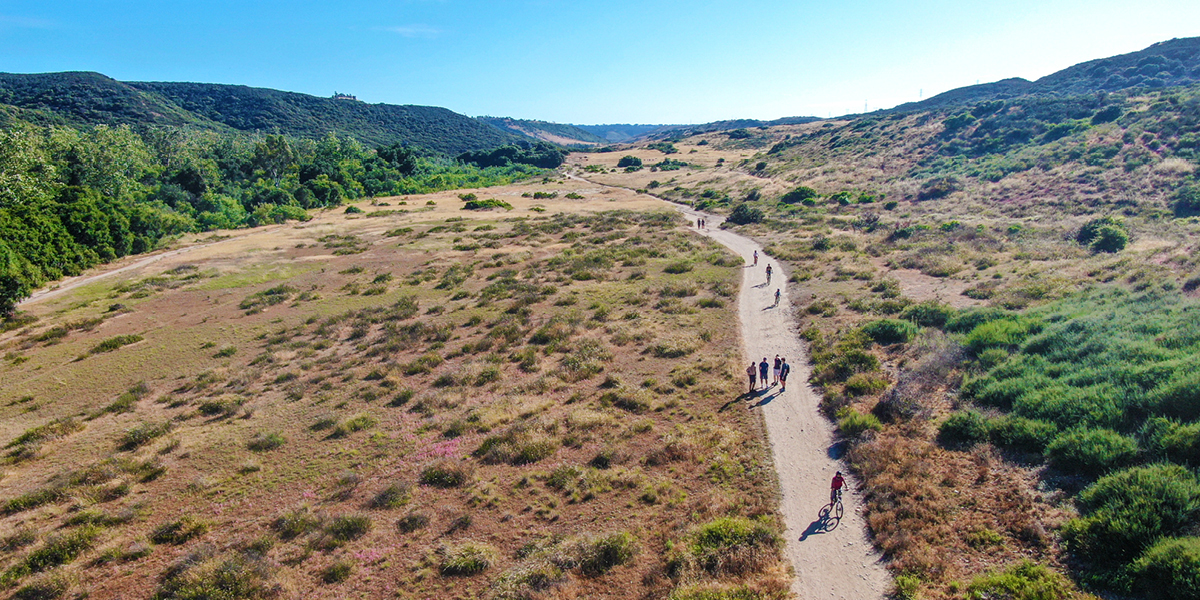Mitigation funds are financial resources set aside to address negative impacts caused by specific activities, such as construction or development projects.
We work with public agencies, project developers, public utilities, school districts, transportation agencies, land trusts, biologists and land use attorneys to establish such funds to mitigate the potential harm caused to natural resources or communities by these activities.
With more than $57 million in 110 mitigation funds, our long history of strong investment performance and our relationships with the nonprofit community make us an ideal mitigation fund partner.
Let’s explore the benefits of mitigation funds, including their role in promoting environmental sustainability, enhancing community resilience and reducing business risks.
Benefits of Mitigation Funds
San Diego Foundation (SDF) acts as a third-party manager of endowment and non-endowment funds for mitigation purposes, including on-site mitigation, off-site mitigation, mitigation banks and in-lieu fee programs.
Key benefits of establishing mitigation funds at SDF include:
- Accessing our experienced team to help answer questions, troubleshoot issues or provide financial forecasts at any point in your process.
- Reducing financial risk. Many habitat managers prefer to have funds managed by outside specialists rather than having to manage the investment themselves.
- Meeting or exceeding legal standards and best practices while leveraging our investment expertise to achieve returns that fund long-term management and account for inflation. Government and joint powers agencies have restrictions on investment options that make it difficult to maximize diversification and returns.
- Operating in accordance with legal standards, such as all Uniform Management of Institutional Funds Act (UMIFA) and Uniform Prudent Management of Institutional Funds Act (UPMIFA) standards.
Promoting Environmental Sustainability
One of the primary benefits of mitigation funds is their role in promoting environmental sustainability. Mitigation funds are established to ensure that any negative impacts caused by a specific activity are offset by investments in environmental protection measures.
For example, if a construction project results in the loss of wetlands, wetland mitigation funds can be used to restore or create new wetlands elsewhere to compensate for the loss.
By investing in environmental protection measures, mitigation funds help to conserve natural resources, reduce pollution and enhance biodiversity. This not only benefits the environment but also provides social and economic benefits, such as improved air and water quality, increased tourism, and greater access to natural resources.
For example, San Diego Habitat Conservancy (SDHC) became one of the early land conservation managers to partner with SDF in the mitigation space.
The sites SDHC manages in McCain Valley serve as mitigation for the biological impacts resulting from the construction of the Tule Wind Farm, which included the installation of the wind turbines, a 138-kilovolt transmission line, access roads and associated facilities.
The Upper 600 Tule Wind Mitigation Site consists of 600 acres of open space near the unincorporated communities of Jacumba and Boulevard.
The mitigation endowment funds at SDF support the long-term management tasks to be performed by SDHC, supporting regular site visits, rare plant surveys, vegetation mapping and removal of invasive plant species, among other tasks.
Enhancing Community Resilience
Mitigation funds can also enhance community resilience by helping to prevent or mitigate the negative impacts of specific activities on local communities.
For example, if a new development project is expected to result in increased traffic, the mitigation fund can be used to invest in transportation infrastructure improvements, such as new roads or public transit options, to alleviate the impacts on local residents.
At SDF, however, most often mitigation funds protect and preserve lands and species, such as the Quino checkerspot butterfly.
Due to real estate advances, climate change and wildfires in Southern California, the Quino checkerspots have reduced from hundreds to tiny colonies in the U.S.-Mexico border region. They received their endangered species designation in 1997.
A land developer in the vicinity of Calpine’s Otay Mesa Energy Center was required to create a perpetual endowment fund that would be directed toward research and habitat maintenance for the Quino checkerspot butterfly. To execute the requirement, SDF was tasked with holding the mitigation funds to benefit the butterfly and its habitat in South San Diego County.
The Energy Commission and U.S. Fish and Wildlife Services staff decided how the endowment funds were to be used to further the understanding and management of the butterflies.
By investing in community resilience measures, mitigation funds help to reduce the potential for social and economic disruptions caused by development projects. This can help to build community trust and support for new projects, leading to greater long-term success and sustainability.
Reducing Business Risks
Another benefit of mitigation funds is their role in reducing business risks associated with specific activities.
For example, if a mining company is required to establish a mitigation fund to address the environmental impacts of their operations, this can help to reduce the risk of legal or financial penalties for non-compliance with environmental regulations.
By investing in mitigation funds, businesses can demonstrate their commitment to sustainability and responsible corporate citizenship. This can help to build a positive reputation and enhance brand value, which can lead to increased customer loyalty and support.
Learn More about Mitigation
Mitigation funds are an important tool for promoting environmental sustainability, enhancing community resilience and reducing business risks.
By establishing mitigation funds at SDF to address the potential negative impacts of specific activities, partners can help ensure that these activities are carried out in a responsible and sustainable manner, which can lead to greater social, economic, and environmental benefits in our region.








